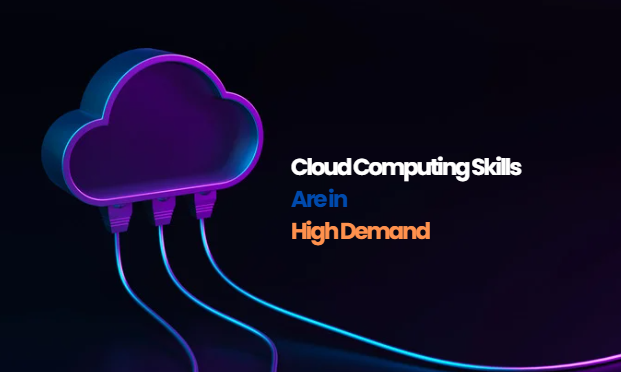
1. What is Microsoft Azure?
Azure is a cloud computing platform provided by Microsoft. It offers a wide range of services and resources for building, deploying, and managing applications and services.
2. What is Cloud Computing?
Cloud computing is the delivery of computing resources and services over the internet. Instead of relying on local servers or personal devices to store and process data, cloud computing allows users to access and use a shared pool of resources, including servers, storage, databases, networking, software, and applications, provided by a cloud service provider.
3. What are the main components of Azure?
The main components of Azure include:
- Compute: Virtual Machines, Azure Functions, App Services, etc.
- Storage: Blob Storage, File Storage, Table Storage, etc.
- Networking: Virtual Networks, Load Balancers, VPN Gateways, etc.
- Databases: Azure SQL Database, Cosmos DB, Azure Database for MySQL, etc.
- Identity and Access Management [IAM]: Azure Active Directory, Azure AD B2C, etc.
4. What sorts of web applications can run on Azure?
Azure supports multiple types of web applications, including various flavors of .NET, node.js, PHP, Python, Java and more.
5. What is the use of Windows Azure Compute Emulator?
The Compute emulator is a local emulator of Windows Azure which we can use to build and test our applications before deploying it to Microsoft Azure Cloud.
6. How much storage can I use with a virtual machine?
Each data disk can be up to 1 TB. The number of data disks that you can use depends on the size of the virtual machine [VM].
We have new Azure Managed Disks that are recommended disk storage offerings for use with Azure Virtual Machines for persistent storage of data. You can use multiple Managed Disks with each Virtual Machine. Managed Disks offer two types of durable storage options: Premium and Standard Managed Disks.
7. Can we log in to a Linux Virtual Machine without using a password?
Yes, it is possible by making use of the Key Vault mapping to any Admin VM, we can log in to another VM without the need for a password.
8. Define virtual machine scale sets in Azure
VMSS – Virtual machine scale sets, are the one that you simply can use to deploy and manage a group of identical VM’s. With all the VM instances configured the same, scale sets are designed to support true Autoscale, and no pre-provisioning of VMs is required. So it is very easy to build large-scale services that target big data, big compute, and containerized workloads.
9. Is it possible to clone or copy an existing Azure VM?
Yes. Using managed images, you can create an image of a virtual machine and then use the image to build multiple new VMs.
Knowledge Awaits: Visit Our Courses
10. What are the different Storage features in Windows Azure?
- Blob
- File
- Tableau
- Queue
BLOB: BLOBs offer a component for storing a lot of content or binary data, for instance, pictures, sound and visual documents. It can add up to a maximum of 200 terabytes and can be taken up by utilizing REST APIs.
File: Files offers simple, secure and fully managed file shares. File shares in the cloud can be accessible using the industry-standard SMB 3.0 and HTTPS protocol. We can mount file shares simultaneously in the cloud or on-premises on Linux, Windows, and macOS.
Table: Tables represent storage areas across machines for information that’s within the sort of properties on the cloud.
Queue: The only target of a Queue is to empower communication amongst Web and Worker Role instances. They help in storing messages that may be accessed by a customer.
11. What is the storage key in Azure?
In Azure, a storage key is a security credential that grants access and permission to interact with an Azure storage account. It is essentially a pair of access keys, namely the primary key and the secondary key, associated with the storage account.
When you create an Azure storage account, two storage keys are automatically generated. These keys are long, randomly generated strings that serve as a form of authentication and authorization for accessing the storage account. Each storage key is unique to the storage account and provides full access privileges.
12. What is Azure Explorer?
Azure Explorer is a free Microsoft Azure storage tool; in this, we can manage all our Microsoft Azure blobs at a common place or in one place. Azure Storage Explorer is a useful GUI tool for inspecting and altering the data.
13. What tools can I use to create a VNet?
You can use the following tools to create or configure a VNet:
- Azure portal
- PowerShell
- Azure CLI
- A network configuration file (“netcfg” – for classic VNets only).
14. How small and how large can VNets and subnets be?
The smallest supported IPv4 subnet is /29, and the largest is /2 (using CIDR subnet definitions). IPv6 subnets must be exactly /64 in size.
15. Can I connect to the internet from a VM in a VNet?
Yes. All VMs and Cloud Services role instances deployed within a VNet can connect to the Internet.
16. What is Azure NSG?
Azure NSG or Network Security Group is the solution that Azure offers to network admins to manage network communications to and from various different resources. It is a sequential collection of rules that an administrator has described in a planned structure to allow or deny network traffic. NSG provides stateful security, i.e. if you open a specific port for outbound traffic, you don’t need to allow inbound port for the returning response.
17. Define Azure Network Virtual Appliance (NVA)
Azure network virtual appliance is used in the Azure application to enhance high availability. It is used as an advanced level of control over traffic flows, such as when building a demilitarized zone (DMZ) in the cloud.
18. Why is Azure Active Directory used?
Azure Active Directory is an IAM i.e. Identity and Access Management provider system. It is wont to grant access to your employees to specific products and services in your network. For example: Salesforce.com, twitter etc. Azure AD has some in-built support for applications in its gallery which may be added directly.
19. How can I connect my on-premises directory to Azure AD?
You can connect your on-premises directory to Azure AD by using Azure AD Connect.
20. What is Azure RBAC?
Azure RBAC stands for Azure Role-Based Access Control. It is a built-in authorization system provided by Azure that enables fine-grained access management and control over Azure resources. RBAC allows you to grant appropriate permissions to users, groups, or applications at various scopes, such as subscriptions, resource groups, or individual resources.
With Azure RBAC, you can assign roles to users or groups to define what actions they can perform and what resources they can access within an Azure subscription. Roles are sets of permissions that determine the level of access and control over Azure resources.
21. What is Azure Policy?
Policies are sets of rules that specify what can and cannot be created in either a single resource group or a full subscription.
22. What are Azure Blueprints?
Just as a blueprint allows an engineer or an architect to sketch a project’s design parameters, Azure Blueprints enables cloud architects and central information technology groups to define a repeatable set of Azure resources that implements and adheres to an organization’s standards, patterns, and requirements.
23. What do you mean by Roles?
Roles are groups of components within an Azure subscription. A role can include multiple virtual machines, websites, databases, storage accounts, load balancers, etc. When you provision resources across different roles, you assign permissions to those resources.
24. What are the roles available in the Windows Azure Cloud?
There are three types of roles in Microsoft Azure cloud:
- Web Role – A web role is basically used to implement a website, using languages supported by the IIS platform like Node JS, PHP, .NET, etc. It is configured and customized to run APIs and web applications.
- Worker Role – A worker role is more like a helper to the Web role. It is used to perform background processes while the Web Role is used to deploy the website.
- VM Role – The VM role is used by a user to schedule windows services and other tasks. This role is used to customize the virtual machines on which the web and worker role is running.
25. Will it be possible to create a VM using Azure Resource Manager in a Virtual Network that was created using classic deployment?
This is not possible. Using Azure Resource Manager, we cannot deploy a virtual machine into a virtual network that was created using Azure classic deployment.
26. Can I create an external user account in my Azure account?
Yes, but it would require manual creation of such an account.
27. Define Domain
The domain is the interconnected and interlinked nodes that are often a measure undertaken by the organization and these relations will be carried by only one point of the organization.
28. What are Fault & Update Domains?
Fault Domain: A fault domain is a logical group of underlying hardware that share a common power source and network switch, almost like a rack within an on premise data-center. As we create VMs within the same availability set, the Azure platform will automatically distribute our VMs across the fault domains defined by us. This approach limits the effect of power interruptions, potential physical hardware failures, or network outages.
Update Domain: An update domain may be a logical group of underlying hardware which will undergo maintenance or are often rebooted at an equivalent time. As we create VMs within the same availability set, the Azure platform will automatically distribute our VMs across these update domains configured by us. This approach ensures that a minimum of one instance of your application always remains running because the Azure platform undergoes periodic maintenance. The order of update domains being rebooted might not proceed sequentially during planned maintenance, but just one update domain is rebooted at a time.
29. What is CosmosDB?
Azure Cosmos DB is a globally replicated, multimodal database service that offers rich querying over schema-free data. It stores data in JSON format, and there is no need to define the schema in advance; hence it is schema-free. You can execute the SQL query on stored JSON documents.
Azure Cosmos DB is the right solution for web, mobile, and gaming applications when predictable throughput, high availability, and low latency are key requirements.
30. What is a VNet?
VNet may be a representation of your own network within the cloud. It logically isolates your instances launched within the cloud, from the remainder of your resources.
31. What is the Azure App Service?
Azure App Service is a PaaS service model. For skilled developers, it is a completely managed PaaS – Platform as a Service offering, that conveys a vivid arrangement of abilities to web, mobile and integration scenarios.
Mobile Apps in Azure App Service offer a universally accessible mobile application development platform which is easily adaptable for Enterprise Developers and System Integrators that conveys a rich set of capacities to mobile engineers.
32. What is the use of a cloud configuration file?
The primary usage of the cloud configuration file (.csfg) is to hold the main copy of certificates, to have a storage of user-defined settings, and to create several instances for any service projects.
33. Differentiate the verbose and minimal monitoring
The verbose monitoring collects metrics based on the performance that allows close analysis of data that is fed while the application is processing. Minimal monitoring, on the other hand, is a default configuration that makes use of the performance counters collected from the operating system of the host.
34. Define Azure Diagnostic
Azure Diagnostic is an API-based system that gathers the data to diagnose the application which is constantly running. It helps in tuning the verbose monitoring that enables roles of the cloud services.
35. What Is Azure Kubernetes Service?
Kubernetes is an open-source system started by Google to help orchestrate (deploy, scale, and manage) containerized applications. Azure Kubernetes Service makes working with Kuber
36. What is Redis?
Redis is an incredibly large-scale, memory-intensive database application capable of enormous numbers of requests per second at very low latency. The Azure Cache for Redis is a full implementation of Redis that can be accessed by any application either inside or outside of Azure. It also can be used either by itself or in conjunction with other database solutions such as Azure SQL or Cosmos DB.
Explore, Learn, Excel: Access Our Courses
Suggested blogs
14 December 2023
30 November 2023
Recent blogs

21 February 2025
|
06 February 2025
|